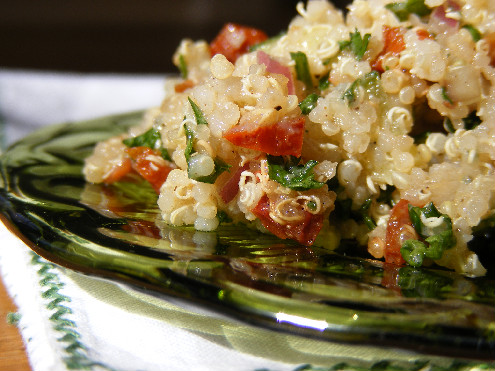Zucchini: Lebanese Stuffed Zucchini – Kousa Mahshi
Friday, September 3rd, 2010Life can get hectic. Trying to keep up with the many things pulling us in different directions – family, work, commitments, community . . . Sometimes it feels like the world around us is moving at an unnerving pace. After awhile it takes its toll and I have to find my center.
We all have a few methods that work. For me, yoga or an escape into nature away from cell phones, computers and crowds zens me out. And, of course, cooking is also on this list.
A few days ago I got into my “me time” while cooking these kousa mihshi, Lebanese stuffed zucchini (also called/spelled kousa mihshi, and kussa mihshi).
For the hour that it took to prep ingredients I was “present” – mind and body, enjoying the sensory experience: coring several zucchini and hearing the corking sound it made with each first cut and tug of the pulp; chopping fragrant fresh herbs: inhaling the warmth from cinnamon and allspice as I measured them out; mashing raw meat with bare hands; and stuffing narrow tubes of zucchini with messy fingers.
This is not a difficult recipe just one that takes a little more time. I could have rushed through the process but why? It was an opportunity to slow down and enjoy the beauty of something I created – from garden to table.
Stuffed vegetables like these kousa mahshi are frequently a Sunday staple but are also served at weddings, parties, and other special gatherings. On such occassions, they are usually prepared communally.
That day, in my kitchen, somehow I felt connected to the generations of Lebanese women who’d made stuffed zucchini for their families and extended families. This is a meal that is as much about process as the final plate.
Sahtayn! – the Arabic version of “bon appétit,” which means “two healths to you.”
Tidbits on Stuffed Vegetables:
- The origin of stuffed vegetables is uncertain, although the Turks and Greeks claim ownership. Originally, they were served in palace kitchens to the wealthy and ruling class.
- Traditionally, lamb is used rather than beef to make the meat and rice filling and very traditional recipes for stuffed vegetables like kousa mahshi called for frying them first before stewing.







